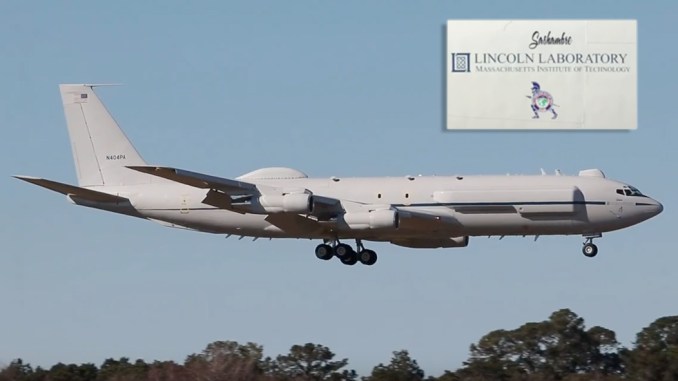Let’s Have A Close Look At “Sashambre” The Rare, Heavily Modified B707 operated by MIT Lincoln Labs for USAF
September 14, 2020 David Cenciotti Military Aviation

The Boeing 707 Is A Communications and Sensor Testbed For The U.S. Air Force.
The rare Boeing 707-321B carrying civil registration N404PA, recently renamed “Sashambre” (previously, “Hannah” and “Paul Revere”), is an experimental aircraft owned by the Air Force Systems Command and operated by a joint venture between the Air Force’s 350th Electronic Systems Wing and M.I.T.’s Lincoln Labs. It flew with Pan Am for many years since 1965 before being purchased by the Air Force. Based at Hanscom Air Force Base, Bedford, Massachusetts, “Sashambre” is one of the seven aircraft aircraft that research teams at the Massachusetts Institute of Technology Lincoln Labs Flight Test Facility’s staff can employ to test their prototype airborne systems: in fact, MIT researchers routinely schedule flight time with aircraft that range from the light C-152 to the heavy B707 “to evaluate new antennas, imagers for air surveillance, aircraft collision-avoidance tools, and long-range RF and laser communication systems,” as well as for for data collection missions.
Under the radio callsign “Research 4 Papa Alpha”, the B707 is used for testing airborne battle management, command, control and communication technology and concepts. The airframe has constantly been modified to accommodate new on-board sensors and equipment so much so the shape of the of the 55-year old Boeing 707, with a bunch of “bulks” and “humps” is pretty unique, and interesting.
On Jan. 8, 2020, our reader Misael Oscar had the opportunity to film the aircraft landing at Brunswick, Georgia. Interestingly, Brunswick Air Guard Station is the homebase of the 224th Joint Communications Support Squadron, which provides deployable tactical communications for Joint and Special Operations Task Force Headquarters. “It operates in environments without a reliable terrestrial network, and is often the first to deploy in order to establish communications networks to enhance command and control between units, services, or coalition forces.” The presence of the experimental aircraft there was most probably linked to some test involving the 224th JCSS.


